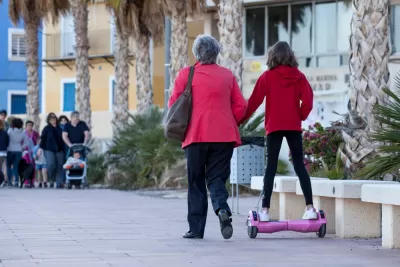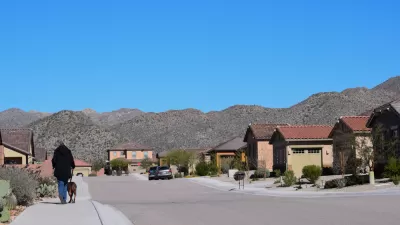More people live in multi-generational homes than ever, according to analysis of Census data by the Pew Research Center.

Audrey Hoffer reports on an increasing trend in the housing market: more people living in multi-generational homes (defined as households including grandparents and grandchildren, or two or more generations of adults. Hoffer cites analysis by the Pew Research Center that uses Census data.
"In 2009, the last year of the Great Recession, 17 percent of Americans lived in households that were multigenerational," explains Hoffer. "This translates to 51.5 million people living in homes with either grandparents and grandchildren, or with two or more adult generations."
Fast forward a few years, and that number has grown, according to Hoffer. "In 2016, the most recent Pew numbers, 20 percent of Americans — 64 million people — lived in multigenerational homes."
"This is a record number of people," says D’Vera Cohn, a senior writer and editor at Pew, as quoted in the article.
The multi-generational household trend opens several angles for Hoffer's coverage. There's the anecdotal experience of living in a multi-generational home, along with the development market that has opened in response to the demand for multi-generation living arrangements.
"Builders are adapting their home designs to create additional living spaces that offer privacy and separation for parents or college students moving back home, and ground floor suites for easy access for grandparents," says Kim Adams, director of marketing for the Brambleton Group, as quoted in the article.
Sources on both sides of the market expect the trend to continue.
FULL STORY: Homes with multigenerational family members are a growing trend

Alabama: Trump Terminates Settlements for Black Communities Harmed By Raw Sewage
Trump deemed the landmark civil rights agreement “illegal DEI and environmental justice policy.”

Planetizen Federal Action Tracker
A weekly monitor of how Trump’s orders and actions are impacting planners and planning in America.

The 120 Year Old Tiny Home Villages That Sheltered San Francisco’s Earthquake Refugees
More than a century ago, San Francisco mobilized to house thousands of residents displaced by the 1906 earthquake. Could their strategy offer a model for the present?

Ken Jennings Launches Transit Web Series
The Jeopardy champ wants you to ride public transit.

BLM To Rescind Public Lands Rule
The change will downgrade conservation, once again putting federal land at risk for mining and other extractive uses.

Indy Neighborhood Group Builds Temporary Multi-Use Path
Community members, aided in part by funding from the city, repurposed a vehicle lane to create a protected bike and pedestrian path for the summer season.
Urban Design for Planners 1: Software Tools
This six-course series explores essential urban design concepts using open source software and equips planners with the tools they need to participate fully in the urban design process.
Planning for Universal Design
Learn the tools for implementing Universal Design in planning regulations.
Clanton & Associates, Inc.
Jessamine County Fiscal Court
Institute for Housing and Urban Development Studies (IHS)
City of Grandview
Harvard GSD Executive Education
Toledo-Lucas County Plan Commissions
Salt Lake City
NYU Wagner Graduate School of Public Service





























